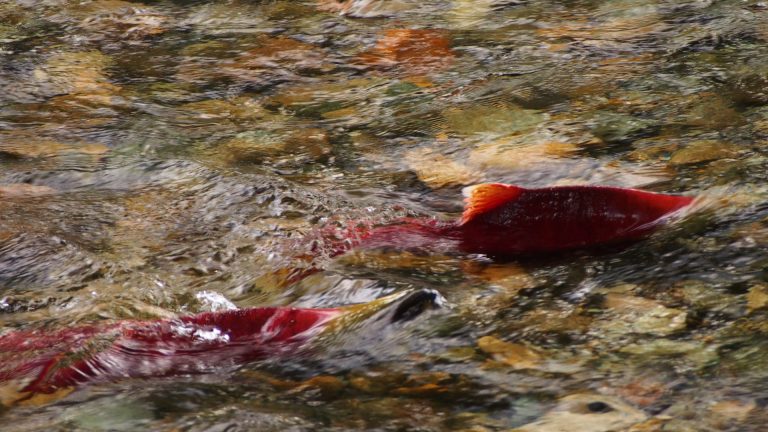Published on November 30, 2021

Environmental and Forest Sciences Ph.D. Candidate Ashlee Abrantes, shares a perspective on how wildlife depend on urban infrastructure in this op-ed written for The Conversation.
—
As the Biden administration prepares to make the biggest investment in U.S. infrastructure in more than a decade, there’s much discussion about how systems like roads, bridges and electric power grids affect people’s daily lives. Here’s an angle that’s received less attention: Wildlife depends on infrastructure too.
I’m studying how human-made structures affect salmon migration between freshwater streams and the Pacific Ocean. Washington state is home to five species of Pacific salmon: chum, pink, and the locally endangered sockeye, coho and Chinook. Salmon are commercially, environmentally and culturally important to the Northwest, and many people here follow their migrations.
To travel out to the sea and back inland to spawn, salmon have to pass through thousands of culverts – tunnels that carry streams beneath roads or railways. When culverts fall into disrepair or are blocked, water might still be able to pass through, but fish can’t. This can be a death sentence to fish that migrate.
Washington state has thousands of culverts that need repairs. Salmon are in critical decline, and fixing culverts could increase fish migration and reproduction.
This issue isn’t unique to the Pacific Northwest. Atlantic salmon in the U.S. Northeast are listed as endangered under the Endangered Species Act. State and federal agencies have undertaken significant habitat restoration and conservation efforts, particularly in Maine, to boost salmon populations. These initiatives, which are projected to cost hundreds of millions of dollars over the coming decades, involve actions such as removing river dams. New infrastructure investments could help salmon, as well as people, get where they need to go.
The federal infrastructure bill includes US$1 billion to remove, fix or replace culverts that impede fish passage nationwide – a provision written by members of Washington’s congressional delegation, constituting the first federal program dedicated to this issue. The bill also provides $350 million to build wildlife-friendly road crossings and reconnect migration routes that have been fragmented by development.
Pacific salmon support fisheries worth over $700 million annually. And conserving salmon habitat generates billions of dollars in ecosystem services, such as reduced flooding and better fishing opportunities, for waterways in and around Seattle.
Compared with these benefits, I see investments to fix culverts and make the state’s infrastructure more environmentally friendly as a bargain. As human populations increase and development pushes deeper into wild areas, I believe there will be a growing need for measures like this that can help people coexist safely with wild species.
Continue reading at The Conversation.
Originally written by Ashlee Abrantes for The Conversation.